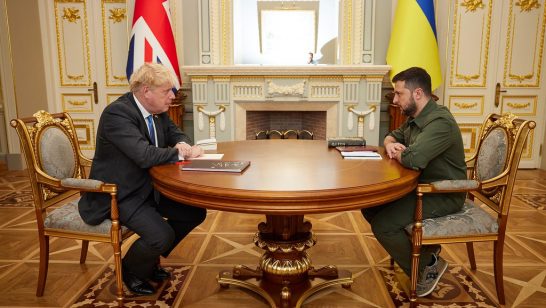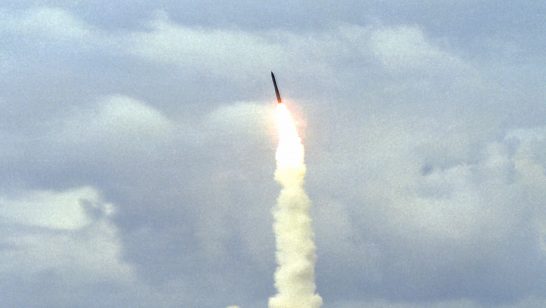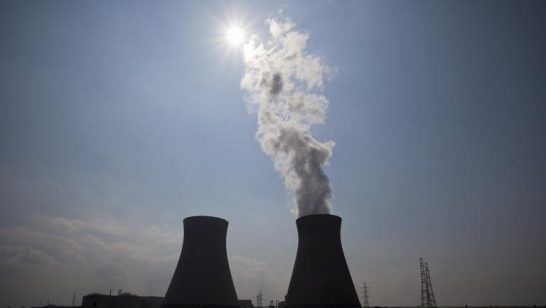
The Russian military’s ongoing offensive, including the capture of Ukraine’s nuclear facilities, has brought to fore the age-old threat of armed conflicts to the safety and security of nuclear installations. The military siege at the Zaporizhzhia plant continues to impinge on the everyday operations of Europe’s largest nuclear station, fuelling the risks of a potential nuclear crisis. Since the outbreak of the conflict on February 24th, the incidents of warfighting at nuclear plants led Ukrainian authorities to seek the International Atomic Energy Agency’s (IAEA) intervention to ensure the safety of its nuclear reactors and mitigate potential risks arising from a military takeover. Although the international atomic energy agency (IAEA) is providing necessary technical assistance towards ensuring nuclear safety, conditions at the Zaporizhzhia plant remain volatile as the Russian militaries refuse to cede control of these plants to Ukrainian operators.
Similarly, at the Chernobyl plant, even though the Russian forces reportedly left the site after being exposed to radiation, the spike in radiation levels caused due to the movement of Russian troops and vehicles has created an unwarranted risk of radiological contamination. As the war in Ukraine shows no signs of ending, the prolonged military occupation will arguably affect many routine activities such as refuelling, maintenance, and transportation of men and materials. This, in turn, would also adversely affect the IAEA’s efforts to implement the seven-point safety framework, thereby leaving nuclear safety to chance. The events in Ukraine, therefore, merit a serious rethinking of the extant nuclear safety regimes and how best the international community can reinforce the global nuclear safety and security norms.
Today’s global nuclear order faces an uncertain future, especially regarding the gradual unravelling of consensus among major powers over its joint steering. The nuclear safety threats emerging in the context of various direct or no-contact wars have emerged as a complex challenge with no easy answer. Since the dawn of the nuclear age, the safe design and operation of nuclear reactors have been a foremost priority for the diffusing peaceful uses of nuclear power. Some early incidents, such as fires at the Windscale (1957) and the SL-1 reactor (1961) in the U.K. and the USA, forced the nuclear industry to adopt strict safety principles to deal with various technically foreseeable and a set of unforeseeable accident sequences. These are best known as the design-based and beyond design-based accidents (BDBA) in technical parlance.
Adopting such safety criteria was also essential to reassure policymakers and the public about the safety of nuclear power installations, especially amidst concerns surrounding radiation protection from various artificial sources. To this end, the global nuclear industry has evolved a range of technical and institutional safety measures to mitigate plausible and probabilistic safety threats to nuclear plants and installations. Significantly, the challenge of addressing various ‘rare’ yet ‘probable’ accident sequences saw the nuclear industry developing the so-called ‘probabilistic safety approach’ (PSA) in the 1970s. PSA mainly aimed to assess the probabilities of extreme natural or other events leading to major accidents and communicate safety risks to people in comparative terms.
Besides technical tools like PSA, the international community developed various institutional frameworks to protect nuclear infrastructure from known and unknown dangers. For instance, some major accidents in the nuclear industry, such as the Chernobyl disaster in 1986, saw the international community adopting international treaties like the Convention on Nuclear Safety (CNS) and other allied instruments to improve nuclear safety. Similarly, to factor in ‘probable’ risks like armed conflicts, international efforts focussed on adopting binding legal and normative commitments to prevent the targeting of nuclear installations during conflicts.
Starting as early as 1956, the International Committee of the Red Cross (ICRC) adopted draft rules outlawing armed attacks on nuclear facilities. The ICRC rules nevertheless failed to attain universal status owing to the intensifying Cold War divide between the Soviet and Western blocs. The counterforce targeting policies adopted during the cold war years allegedly held the United States and the erstwhile Soviet Union from making legal assurances to exclude nuclear facilities as potential targets during the war. However, as few countries possessed operational nuclear plants in the 1960s, it took another decade to negotiate a legal guarantee against targeting nuclear facilities during armed conflicts.
In 1977, the international community adopted the Addition Protocol I to the Geneva Conventions, and its article 56 deals with protecting nuclear facilities during armed conflict. It stipulated that “…..nuclear electrical generating stations, shall not be made the object of attack, even where these objects are military objectives, if such attack may cause the release of dangerous forces and consequent severe losses among the civilian population”.
Since not all attacks necessarily result in the “release of dangerous forces” – radiation, in this case – there remains considerable ambiguity around protecting nuclear facilities during armed conflict. Furthermore, clause 2b of Article 56 removes the legal protection in cases where a “nuclear electrical generating station provides electric power in regular, significant and direct support of military operations and if such attack is the only feasible way to terminate such support”.
The implication of Article 2b is significant, as it does not grant complete immunity from targeting nuclear plants during conflicts. On the contrary, it arguably provides ample basis for rationalising nuclear targeting for defensive purposes and weakens the normative basis for targeting nuclear facilities. Moreover, the framing of Article 56 reflects a severe lack of knowledge and appreciation surrounding unforeseen sequences of events leading to radioactive release and its transboundary consequences. Consequently, Article 56 of the Geneva Convention, though in force since 1977, has been inadequate to deal with the threat of armed conflicts. Since it entered into force, nuclear facilities have been affected in various armed conflicts, most notably during Israel’s airstrikes on Iraq’s Osirak research reactor in 1981 and Iraqi attacks on Iran’s nuclear facilities during the Iran-Iraq war in the 1980s.
To address this gap in the legal framework, the IAEA’s General Conference adopted as many as five resolutions which call upon its members to refrain from making nuclear installations a target of attack during conflicts. Similarly, countries like India and Pakistan made bilateral pledges to not attack their respective nuclear facilities in the event of war. Given that the risks of a potential nuclear accident are likely to outweigh any political gains from targeting nuclear plants, there is a strong case for reinforcing the normative and legal commitments to safeguard global nuclear infrastructure.
While the nuclear warfighting strategies during the Cold War prevented the adoption of legally binding commitments against targeting nuclear facilities, the efforts to negotiate such commitments in post-Cold War years also yielded limited success. The Convention on Nuclear Safety (CNS), adopted after the Chernobyl accident in 1986, has been an important forum to deliberate on various nuclear safety risks. The CNS review meetings frequently discussed the threat of armed conflicts while seeking legally binding compliance with IAEA’s design, operation, and regulatory standards. The insistence of member states to adopt voluntary commitments remained a contested issue in the enforcement of CNS.
Since the Fukushima disaster in March 2011, concerted efforts have improved global nuclear safety governance through various peer-review mechanisms and by sharing industry best practices. Concerns surrounding armed conflict, however, remained primarily on the margins of global nuclear safety discussion, including President Obama’s much-publicised nuclear security summits. The growing risks from armed conflicts over the past decade and an alarming increase in cyber-attacks on nuclear infrastructure, have put global nuclear safety experts in a cold sweat. Russia’s forceful capture of Ukraine’s Zaporizhzhia and Chernobyl reactors needs consideration in this broad techno-historical setting.
The Russian military’s decision to target Ukraine’s atomic infrastructure not only sets a dangerous precedent for future conflict but also marks a setback for improving global nuclear safety governance. The Ukraine conflict is unfolding many worst-case scenarios that human society will allow to materialise at its own peril. The year 2022 marks the 36th anniversary of the infamous Chernobyl disaster that affected large parts of Europe and the former Soviet Union. Another nuclear accident in Ukraine will have severe consequences for humanity and disproportionately turn public opinion against nuclear power. When the world is seriously constrained in sourcing an adequate amount of clean energy, a nuclear accident in Ukraine due to the ongoing conflict would adversely hurt nuclear power’s bait for addressing worsening global climate impacts.
Decoupling nuclear plants from military targeting is essential to enhance nuclear safety in the long run. The international community can achieve this through binding legal and normative commitments that will bolster nuclear security worldwide. Withdrawing its forces from Ukraine’s nuclear facilities is also vital for the Russian nuclear industry’s reputation as a leading exporter of nuclear technology, which may have taken a severe beating since the start of the war. Observing global nuclear safety norms is also vital for Putin to limit Moscow’s ongoing diplomatic isolation and, more importantly, to restore Russia’s image as a responsible power in global nuclear governance.
The opinions articulated above represent the views of the author(s) and do not necessarily reflect the position of the European Leadership Network or any of its members. The ELN’s aim is to encourage debates that will help develop Europe’s capacity to address the pressing foreign, defence, and security policy challenges of our time.
Image: Wikimedia Commons, Paweł ‘pbm’ Szubert



